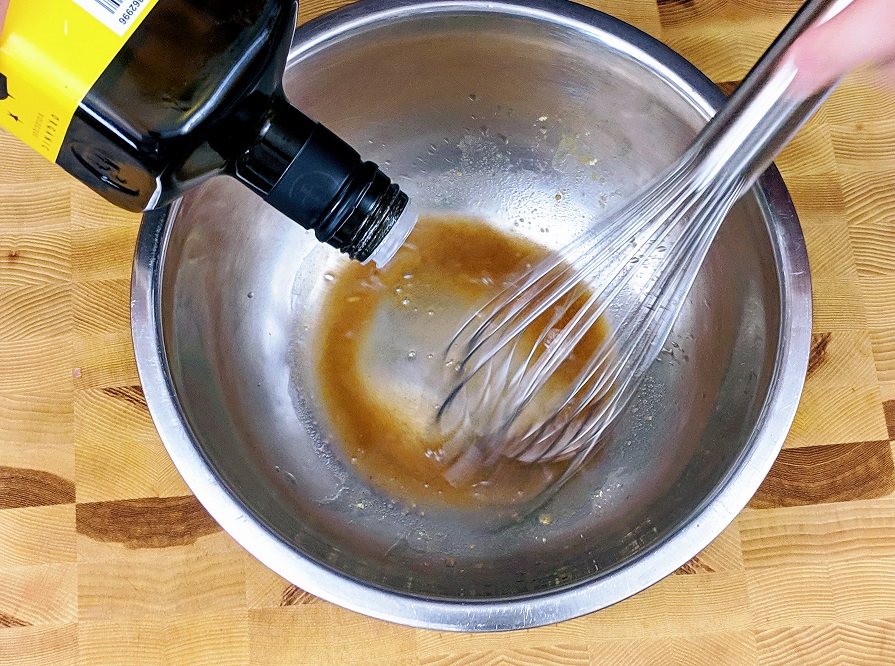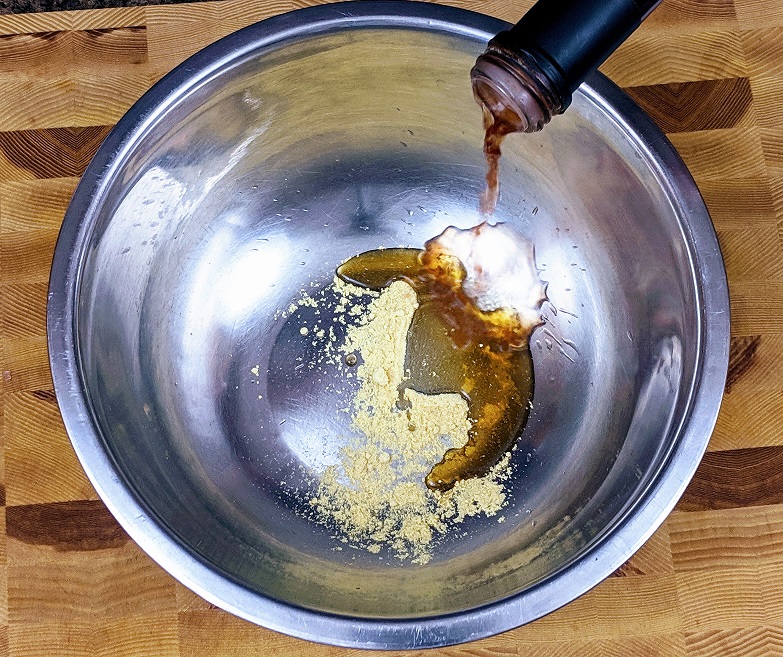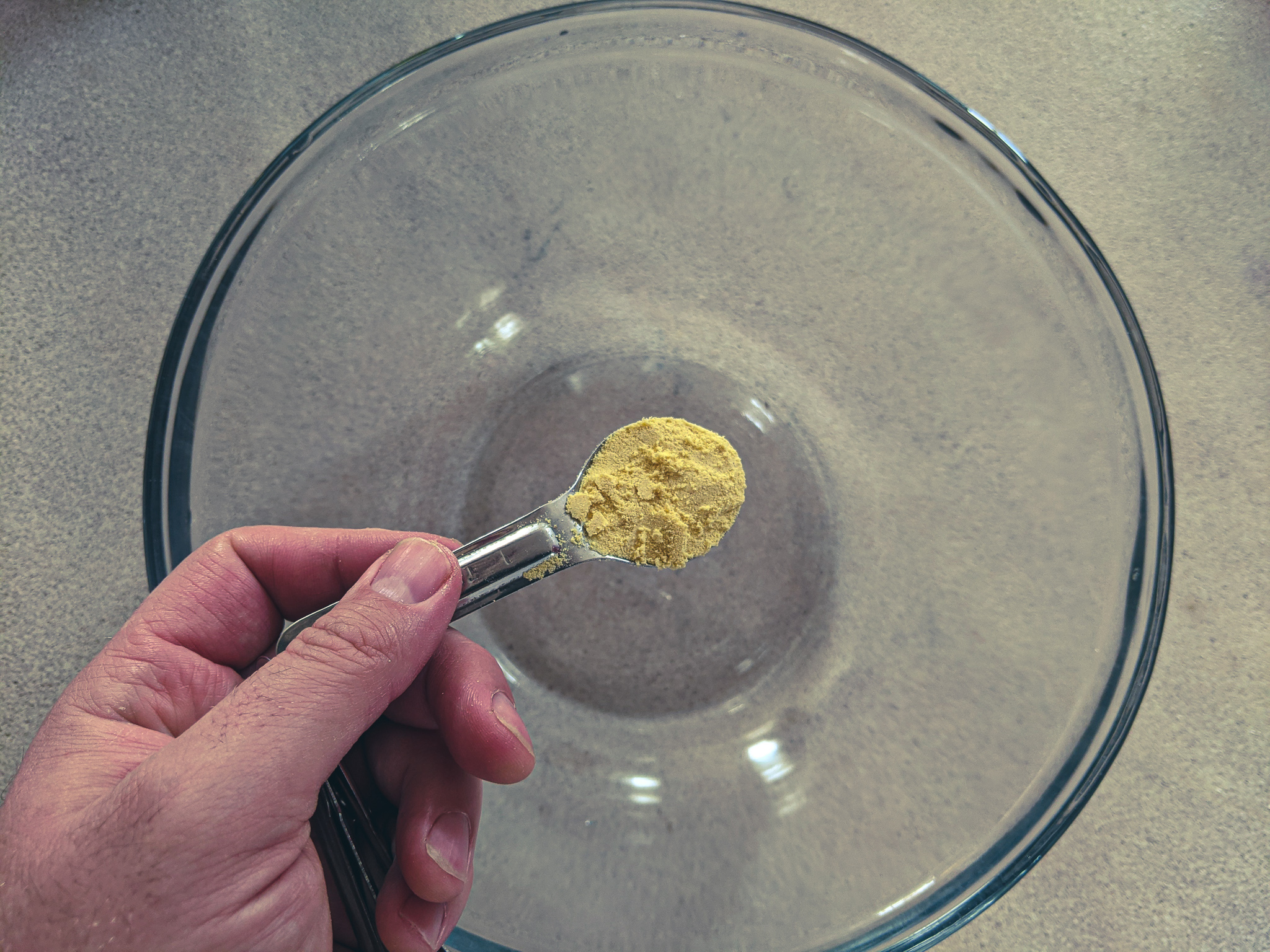What is a vinaigrette? How do you make one? And why should you care?
Those are all good questions that I am about to answer.

Everything I know about Vinaigrette
What is a vinaigrette?
A vinaigrette is a mixture (emulsion) of oil and vinegar most commonly used to dress salads. An emulsion is a mixture of two liquids that don’t typically mix. Some vinaigrettes have a stronger emulsion which means that they stay together longer. A weak emulsion will break (oil and vinegar separate) within a few minutes.
Typically, a vinaigrette is held together by a binder. In the case of homemade vinaigrettes, this is most commonly mustard. This can be any style of prepared mustard or even ground mustard seed. When used in vinaigrette mustard is playing the same role as egg yolks do in a mayonnaise. Both mustard seeds and egg yolks contain a substance called Lecithin which is both hydrophilic and lipophilic meaning it attracts water and fatty substances. All that really means is that it creates a bond between the vinegar and the oil.
A strong emulsion is one that is built slowly. This allows time for a strong bond to form. That is why when making a vinaigrette the recipe usually calls for the addition of only a few drops of oil to start. Once the base of the emulsion is built the oil can be added more quickly. A strong emulsion will hold together days, weeks, or even months.
Oil to Vinegar Ratio

There is a limit to how much oil and vinegar can be emulsified together. Generally, a ratio of 3:1 oil to vinegar is followed however a 4:1 ratio is common as well. A 4:1 ratio will yield a thicker creamier vinaigrette.
So, if you wanted one cup of salad dressing, you could use 1/4 cup vinegar and 3/4 cup oil. Or, 1/3 cup vinegar, and 2/3 cup oil.
What is the best type of oil to use?
There isn’t really one type of oil that is best suited to making a vinaigrette. Really, it comes down to the flavour you are looking for. For example, if you wanted to make a vinaigrette that tasted of hazelnuts you would likely want to use a hazelnut oil.
More commonly the flavour of a vinaigrette comes from the vinegar and additional flavouring ingredients. Flavoured vinegar may include raspberry, balsamic, apple cider, white wine, red wine… you get the idea.
Because the flavour isn’t typically coming from the oil, we generally want a to use a neutral oil. This could be canola oil, sunflower oil, or any number of other oils.
Using olive oil in vinaigrettes.
Olive oil has a pretty strong and distinct flavour that be be overpowering in large doses. This means that it isn’t well suited to being used to make vinaigrettes. I should say that I often use 1/4 olive oil and 3/4 canola oil to make my vinaigrettes. I get a little bit of that olive oil flavour but it isn’t going to ruin my vinaigrette.
What type of vinegar should you use?
The type of vinegar you use is most commonly what dictates the flavour and name of the vinaigrette. A white wine vinaigrette is made with white wine vinegar. So, you can use any kind of vinegar you want, just try and pair it with the ingredients in the salad you will be using the vinaigrette on.
Other ingredients.
It is very common for there to be a sweet element in vinaigrettes. This helps to balance the acidity. This sweetness can come from the addition of honey or maple syrup. It may come from the vinegar, like balsamic, or it may be the combination of two or more things. The only rule here is that we still want a bit of that acidity so, don’t sweeten the dressing too much. For 1 cup of vinaigrette, I typically use 1-2 tsp of honey.
Herbs, spices, garlic, and shallots, can all be added to a vinaigrette to add flavour. Again, it comes down to the type of vinaigrette you are making and how you will be using it.
How do you make a vinaigrette?

The first step in making a vinaigrette is to combine the vinegar with the binder. For one cup of vinaigrette this would be 1/4 cup vinegar with 1 tsp mustard powder or Dijon. To this other ingredients like honey, and herbs can be added. This is all whisked together.
The second step is to start adding the oil. Always start with just a few drops of oil and add it while whisking. There two main ideas that you need to keep in mind. The first is that you are trying to break the oil into tiny, tiny droplets with the whisk as this makes it easier for the oil to bond with the vinegar. The second is that you are trying to build a foundation without overpowering the binding power of the mustard.
Once the first few drops of oil have been whisked into the vinegar add a few more. Do this three or four times. You shouldn’t really be able to see any oil separation (oil floating on top of the vinegar) at this point. Now, in a slow, steady stream, while whisking, add the remaining oil. You may want to stop the stream every once in a while to make sure the oil is being properly absorbed. Once all the oil has been added taste the vinaigrette and adjust the seasoning with salt and pepper.
Storing a vinaigrette.
Vinaigrettes should be stored covered in the fridge. Because of the nature of the acidity and oil in the vinaigrette, it will last for weeks if not months. A well-made vinaigrette should hold together for a very long time. However, over time the oil and vinegar may separate, this is common. If this happens just shake the mixture back together before use.
Conclusion
Knowing how to make a vinaigrette form scratch is a very valuable skill. With this basic knowledge you can make a unlimited amount of salad dressings. Just stay within that 3:1 or 4:1 ratio and play with adding different ingredients. You own’t believe what you’re able to make.
Equipment
- Whisk
- Mixing Bowl
- Jar with lid
- Measuring Cups
Ingredients
- 1/4 cup Red Wine Vinegar
- 3/4 cup Canola Oil
- 1 tsp Dijon Mustard
- 2 tsp Honey
- Salt and Pepper to taste
Instructions
- Combine the Vinegar, mustard and honey in the mixing bowl and whisk together.
- Whisk a few drops of the oil in the vinegar mixture.
- Whisk a few more drops of the oil into the vinegar mixture.
- Add the remaining oil in a slow steady stream while constantly whisking.
- Once all the oil has been incorporated, season the vinaigrette with salt and pepper.



0 Comments